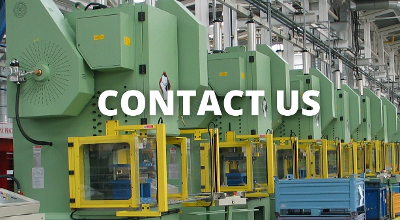Every penny matters whether you're a high-volume production facility or a small metal forming shop, which is why we often hear one common question: what makes an adjustable stroke press worth the investment?
There is a close relationship between downtime, machine utilization, and costs; when your press is down, or it isn't optimal for the job it is running the costs can become significant.
It is worth every company's effort to track and measure maintenance, repair, and downtime costs to evaluate whether new machinery is worth the investment.
If you're in search of a new stamping press that can reduce downtime and boost your return on investment an adjustable stroke press is worth considering.
How can an Adjustable Stroke Press Boost Operational Efficiency?
To illustrate the value of investing in more efficient presses, let's go through an ROI example using real customer data from a study conducted by Sangiacomo Presses Americas in 2019.
A customer was using two 25-year-old presses 50% of the time each. They replaced them with one adjustable stroke press machine. They could now use one machine 100% of the time instead of two machines 50% of the time.
An adjustable stroke press is suitable for multiple types of metal forming because the stroke length can be adjusted to allow for varying tools and applications.
Because of this, the customer was able to get rid of their old presses and just use one press machine at 100%.
Objective 1: What are the savings during the first two years?
Objective 2: What is the machine's ROI in savings?
Assuming machine replacement every ten years
$80k adjustable stroke press over two years:
-
1 press every 10 years: 2 x 80,000/10 = $16,000
-
Opportunity costs, better floor space utilization: 24 months x $600 = $14,000
-
Tool Maintenance, est. 1 service/year: 2 x $2500 = $5,000
-
Repair costs, est. 1 incident/year: 2 x $1000 = $2,000
-
Lost shift due to component failure, est. 1/year: 2 x $1000 = $2,000
-
Maintenance cost, est. 1 shift/year: 2 x $1000 = $2,000
Total savings over two years on a press that costs $80,000: $41,400
What Does This Mean for You?
By replacing their old stamping presses with an adjustable stroke press, the customer was able to compensate for the $80k upfront cost in 4 years, leaving six years or more of positive ROI excluding regular maintenance calls.
With modestly complex tooling and one shift per day, this is the ROI-improving performance we typically see with our customers:
10-25% higher production rates
20-30% longer die life
10-30% reduction in downtime
Questions to ask yourself when assessing the ROI of an adjustable stroke press
* These final numbers were used in the above ROI example using real customer data
1. The Cost of Non-Production
Evaluate the impact of underutilization on your metal stamping operation’s efficiency. An adjustable stroke press, serving as a flexible and adaptable solution, can significantly free up valuable floor space for additional revenue-generating activities, effectively enhancing your stamping operation's overall equipment effectiveness (OEE).
ROI Example: 10' x 20’ sq ft and machine utilized 50% more
-
-
-
- Floor space: $6/sq ft per month
- 200 sq ft x 6 = $1200
- 50% x $1200 = $600*
-
- $600 savings from better floor space utilization
 2. The Impact of Tool Life and Maintenance Expenses
2. The Impact of Tool Life and Maintenance Expenses
By using the shortest possible stroke for a given stamping job with an adjustable stroke press, the impact velocity is decreased, thereby reducing wear and tear on the tool and increasing its life up to 50%.
ROI Example: Doubling the tool life of a midsized tool and die that costs $5,000 to repair
$2,500 savings in tool maintenance per tool
3. Repair Costs and Downtime Reduction
One premature failure of a mechanical/electrical component can amount to around $1000 in repair costs per incident. Sangiacomo Presses incorporates commercially available electrical components into all their presses. Making part procurement much more streamlined which equals less machine downtime and hoops to jump through when ordering replacement parts.
Strategic Stamping Insights
With its flexibility, efficiency gains, and ROI, the adjustable stroke press is a step toward optimizing your manufacturing process. By choosing an adjustable stroke press vs a fixed stroke press, you're not just keeping pace with industry advancements but setting the stage for future growth, innovation, and competitiveness.
Ready to improve ROI and optimize your metal forming operations with an adjustable stroke press?
Contact us today to get an ROI assessment or a quote.
